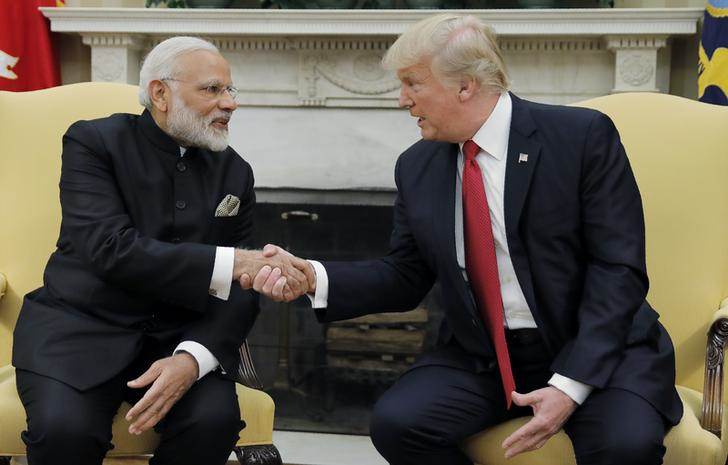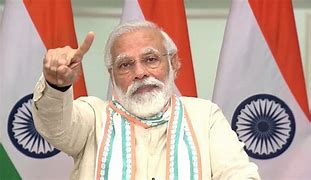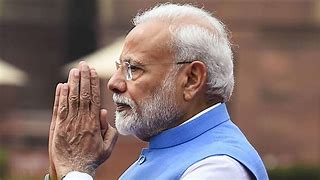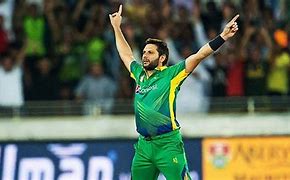Feature
Trump welcomes Modi as ‘a true friend’ at White House

New delhi: Prime Minister Narendra Modi’s meeting with US President Donald Trump on Monday appeared to be between friends, without the awkwardness of a first date. “A true friend” that’s how President Donald Trump described India as he welcomed Prime Minister Narendra Modi to the White House.
The two leaders a little over four hours including Trump’s first working dinner with a Head of State discussing a wide range of issues including trade and terrorism.
The meeting began with a 20-minute one-on-one meeting between the two leaders followed by delegation-level talks between officials of the two nations. Modi and Trump then issued a joint statement at the Rose Garden. Following this, the two delegations took a 30-minute cocktail break — hosted by Vice President Mike Pence. They then once again sat down for a ‘working dinner’ — a first for the Trump administration — that lasted about an hour. The Indian delegation then left for their hotel.
Trade and terrorism were the two key talking points of the meeting. But there was much more. In the joint statement issued, the two nations also discussed strengthening energy strategies. While there was no explicit mention of the Paris climate deal, the leaders called for a rational approach that balances environment and climate policy, global economic development, and energy security needs.
On terrorism, the two nations reiterated their demand that Pakistan ensure its territory is not used to shield terrorists and launch terror attacks in the region. “Both our nations have been struck by the evils of terrorism, and we are both determined to destroy terrorist organisations and the radical ideology that drives them. We will destroy radical Islamic terrorism,” Trump said in his statement to the press. Modi, on his part, reiterated India’s concern regarding terrorism in the Indo-Pacific region.
On trade, Trump said he would like it to be ‘fair and reciprocal’, hoping that the trade deficit with India currently almost $31 billion will fall. Trump said, “It is important that barriers be removed to the export of US goods into your markets, and that we reduce our trade deficit with your country.” Trump also welcomed India’s Spicejet airlines order of about 205 aircraft from Boeing, worth up to $22 billion that the airliner co-founder Ajay Singh says will ensure up to 132,000 American jobs. The leaders were also hopeful that tax reforms launched by both the countries will “unlock immense economic opportunities”. Modi said India would continue to strengthen the already existing trade and manufacturing partnership the two nations share, something, Modi said, that was beneficial to both the nations.
The deal between India’s Nuclear Power Corporation of India (NPCI) and Westinghouse Electric Company featured in the talks between the two nations. Trump and Modi were hopeful that the deal for six nuclear reactors and the projects financing would soon be completed. India and US also announced that they would boost energy ties and expand innovation linkages across the sector while deepening cooperation on efficient fossil fuel technologies, smart grids and energy storage.
Interestingly, when India announced it was not going to attend the Belt and Road Initiative (BRI) Summit, Ministry of External Affairs (MEA) Spokesperson Gopal Baglay had said the following: “Connectivity initiatives must follow principles of financial responsibility to avoid projects that would create unsustainable debt burden for communities; balanced ecological and environmental protection and preservation standards; transparent assessment of project costs; and skill and technology transfer to help long term running and maintenance of the assets created by local communities. Connectivity projects must be pursued in a manner that respects sovereignty and territorial integrity.”
The two leaders resolved to “increase cooperation, enhance diplomatic consultations, and increase tangible collaboration with partners in the Middle East”.
Modi and Trump also expressed concern regarding North Korea’s repeated continued provocations, emphasising that its “destabilising pursuit of nuclear and ballistic missile programs poses a grave threat to regional security and global peace”, and pledged to work together to counter the North Korea’s weapons of mass destruction programs, “including by holding accountable all parties that support these programs” again a veiled mention of China.
India, for one, wanted to revitalise its relationship back to what it was like under the Obama administration. This, after the Trump administration appeared to have courted China to have them act against US rival North Korea.
Trump’s statements on ‘territorial integrity’ and his administration’s outright condemnation of terrorism by Pakistan-backed organisations was something India was hopeful would come out of the meeting. Moreover, the United States also designated the Hizb-ul-Mujahideen leader Sayeed Salahudeen as a specially designated global terrorist, in what appears to be a big win for India in its fight against terrorism.
The two leaders also affirmed their support for the UN Comprehensive Convention on International Terrorism, something the Obama administration was reluctant to endorse, according to Joshua White, a former White House and Pentagon official. White adds that the “new consultation mechanism” on terrorist listings would be beneficial to both nations and was overdue.
The US also reiterated its strong support for India’s early membership in the Nuclear Suppliers Group, the Wassenaar Arrangement, and the Australia Group. Trump also welcomed India’s formal entry into the International Expedited Traveler Initiative (Global Entry program) that facilitates closer business and educational ties between the citizens of India and the US.
On climate change, the statement on energy makes a mention of ‘clean coal’ but says nothing about the Paris climate deal. Trump, while pulling out of the accord, had then mentioned India as having received millions of dollars in aid. “India makes its participation contingent on receiving billions and billions and billions of dollars in foreign aid from developed countries,” he had then said.
Indicating that both the leaders hope to do much work in boosting their respective economies through mutual partnerships, Modi said “I am sure that the convergence of my vision for ‘New India’ and President Trump’s vision for making America great again will add new dimensions to our cooperation.”
Entertainment
Meghalaya Reserves Legalized Gambling and Sports Betting for Tourists

The State Scores Extra High on Gaming-Friendly Industry Index
Meghalaya scored 92.85 out of 100 possible points in a Gaming Industry Index and proved to be India’s most gaming-friendly state following its recent profound legislation changes over the field allowing land-based and online gaming, including games of chance, under a licensing regime.
The index by the UK India Business Council (UKIBC) uses a scale of 0 to 100 to measure the level of legalisation on gambling and betting achieved by a state based on the scores over a set of seven different games – lottery, horse racing, betting on sports, poker, rummy, casino and fantasy sports
Starting from February last year, Meghalaya became the third state in India’s northeast to legalise gambling and betting after Sikkim and Nagaland. After consultations with the UKIBC, the state proceeded with the adoption of the Meghalaya Regulation of Gaming Act, 2021 and the nullification of the Meghalaya Prevention of Gambling Act, 1970. Subsequently in December, the Meghalaya Regulation of Gaming Rules, 2021 were notified and came into force.
All for the Tourists
The move to legalise and license various forms of offline and online betting and gambling in Meghalaya is aimed at boosting tourism and creating jobs, and altogether raising taxation revenues for the northeastern state. At the same time, the opportunities to bet and gamble legally will be reserved only for tourists and visitors.
“We came out with a Gaming Act and subsequently framed the Regulation of Gaming Rules, 2021. The government will accordingly issue licenses to operate games of skill and chance, both online and offline,” said James P. K. Sangma, Meghalaya State Law and Taxation Minister speaking in the capital city of Shillong. “But the legalized gambling and gaming will only be for tourists and not residents of Meghalaya,” he continued.
To be allowed to play, tourists and people visiting the state for work or business purposes will have to prove their non-resident status by presenting appropriate documents, in a process similar to a bank KYC (Know Your Customer) procedure.
Meghalaya Reaches Out to a Vast Market
With 140 millions of people in India estimated to bet regularly on sports, and a total of 370 million desi bettors around prominent sporting events, as per data from one of the latest reports by Esse N Videri, Meghalaya is set to reach out and take a piece of a vast market.
Estimates on the financial value of India’s sports betting market, combined across all types of offline channels and online sports and cricket predictions and betting platforms, speak about amounts between $130 and $150 billion (roughly between ₹9.7 and ₹11.5 lakh crore).
Andhra Pradesh, Telangana and Delhi are shown to deliver the highest number of bettors and Meghalaya can count on substantial tourists flow from their betting circles. The sports betting communities of Karnataka, Maharashtra, Uttar Pradesh and Haryana are also not to be underestimated.
Among the sports, cricket is most popular, registering 68 percent of the total bet count analyzed by Esse N Videri. Football takes second position with 11 percent of the bets, followed by betting on FIFA at 7 percent and on eCricket at 5 percent. The last position in the Top 5 of popular sports for betting in India is taken by tennis with 3 percent of the bet count.
Local Citizens will Still have Their Teer Betting
Meghalaya residents will still be permitted to participate in teer betting over arrow-shooting results. Teer is a traditional method of gambling, somewhat similar to a lottery draw, and held under the rules of the Meghalaya Regulation of the Game of Arrow Shooting and the Sale of Teer Tickets Act, 2018.
Teer includes bettors wagering on the number of arrows that reach the target which is placed about 50 meters away from a team of 20 archers positioned in a semicircle.
The archers shoot volleys of arrows at the target for ten minutes, and players place their bets choosing a number between 0 and 99 trying to guess the last two digits of the number of arrows that successfully pierce the target.
If, for example, the number of hits is 256, anyone who has bet on 56 wins an amount eight times bigger than their wager.


































